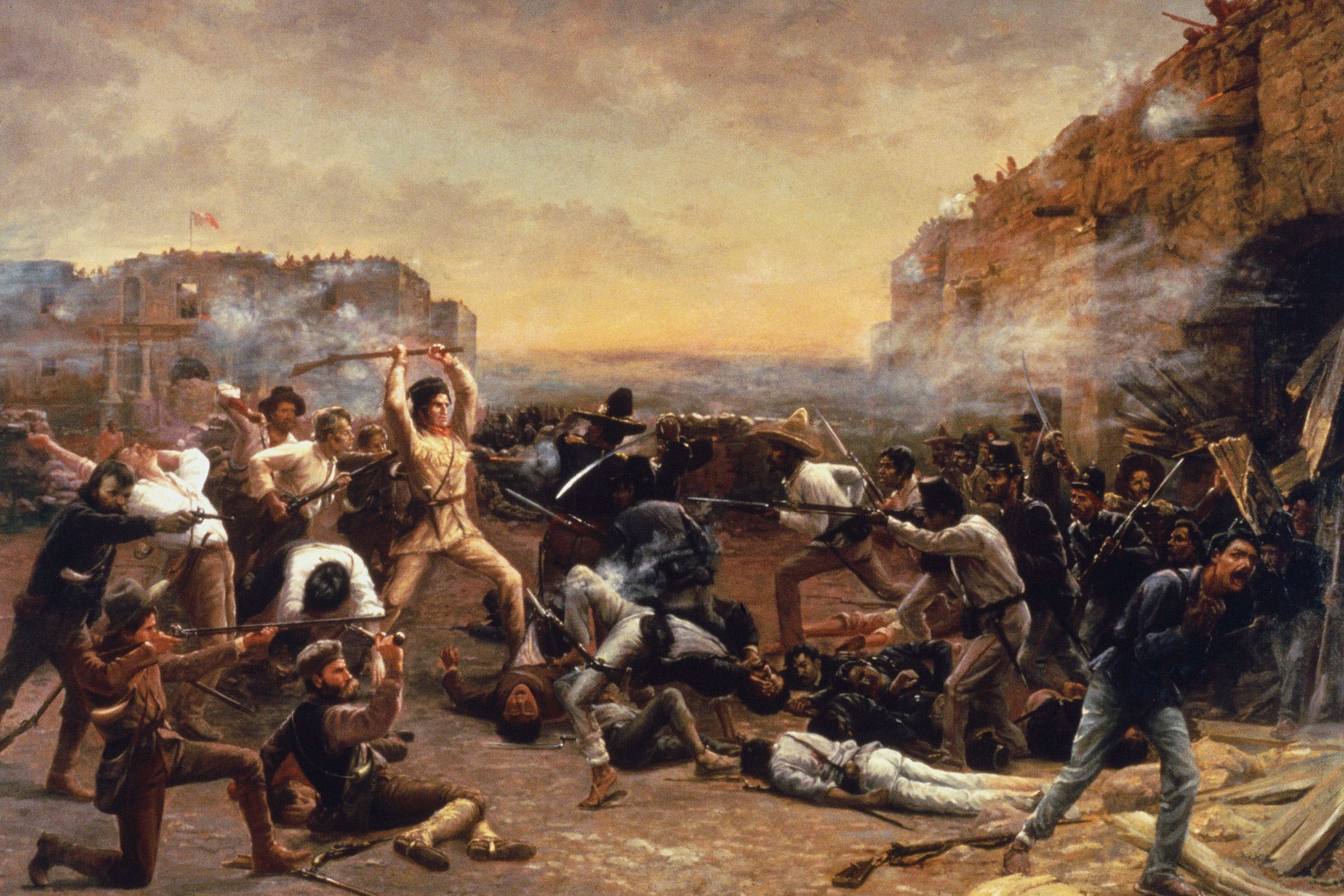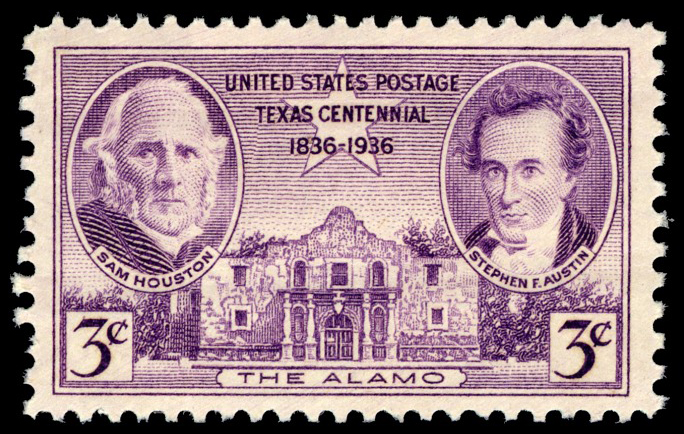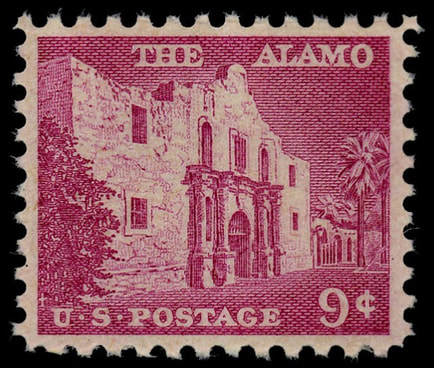Five Facts About the Alamo you Probably Weren't Taught in School
By Mark Pulcifer
Some historical events are instantly recognizable by an exclamation. “Geronimo!” was famously used by paratroopers getting ready to leap from a plane during World War II. It honors the Apache leader of the same name, known for his fearlessness in protecting his people and his land. “Banzai!”, shortened from "Tennōheika Banzai”, originated in Japan and was also made famous in the West during World War II. The Banzai war cry was expressed in a charge, typically by a smaller Japanese army opposing a bigger Chinese or Russian force. Today, “Remember the Alamo!” brings memories of a small band of Texians bravely resisting Santa Anna’s Army during the Texas Revolution who fought for independence from Mexico. While this famous story may be referenced in high school history classes, here are five things about the Alamo that you may not have learned in school.
1. The original name of the Alamo Mission was San Antonio de Valero.
The Mission San Antonio de Valero was a Spanish religious mission for about 80 years before it was turned into a fortress. After being granted permission to establish a mission, Father Antonio de San Buenaventura y Olivares led activities to help advance the Catholic faith by teaching skills to the indigenous residents: teaching Spanish, weaving, farming, masonry, and metalworking. It resided in three buildings close to the San Antonio River's sources from 1718 until 1724. The term “alamo” represented the Spanish word for the nearby cottonwood trees that grew in abundance. The third location was where the Alamo fortress would be built, and the first soldiers for this purpose arrived in 1803. They belonged to a Spanish cavalry group known as the Alamo Company due to their hometown of Alamo de Parras.
The Mission San Antonio de Valero was a Spanish religious mission for about 80 years before it was turned into a fortress. After being granted permission to establish a mission, Father Antonio de San Buenaventura y Olivares led activities to help advance the Catholic faith by teaching skills to the indigenous residents: teaching Spanish, weaving, farming, masonry, and metalworking. It resided in three buildings close to the San Antonio River's sources from 1718 until 1724. The term “alamo” represented the Spanish word for the nearby cottonwood trees that grew in abundance. The third location was where the Alamo fortress would be built, and the first soldiers for this purpose arrived in 1803. They belonged to a Spanish cavalry group known as the Alamo Company due to their hometown of Alamo de Parras.
2. The Alamo was about to be abandoned before the battle took place.
The Spanish occupation of the Alamo lasted until 1835. Not long after Mexico won its independence from Spain in 1821, Tejas (Texas) began its own fight for independence from Mexico. In December of 1835, Mexican forces eventually occupied the Alamo until a team of Texian volunteers led by George Collinsworth and Benjamin Milam captured the fort and seized control of San Antonio. Colonel James Bowie and Colonel William Travis would ultimately command the Texian forces by February of 1836. Due to insufficient troops, General Sam Houston, leader of the Texian forces, advised that the Alamo should be abandoned, but this would have been just days before Santa Anna’s army arrived.
The Spanish occupation of the Alamo lasted until 1835. Not long after Mexico won its independence from Spain in 1821, Tejas (Texas) began its own fight for independence from Mexico. In December of 1835, Mexican forces eventually occupied the Alamo until a team of Texian volunteers led by George Collinsworth and Benjamin Milam captured the fort and seized control of San Antonio. Colonel James Bowie and Colonel William Travis would ultimately command the Texian forces by February of 1836. Due to insufficient troops, General Sam Houston, leader of the Texian forces, advised that the Alamo should be abandoned, but this would have been just days before Santa Anna’s army arrived.
3. Colonel Travis asked his men, almost 50% of whom were volunteers, to fight to the death.
The Alamo was defending the garrison with 18 functional guns and around 150 troops when Santa Anna's army arrived. The volunteers, who were under no obligation to stay, created controversy when they decided to follow Colonel William Travis' orders rather than Jim Bowie's. James Neill left Travis in charge because he realized that they needed to rally the troops for the impending conflict. According to legend, he challenged his men to continue fighting by drawing a line in the sand. Those willing to fight to the death would step across. Moses Rose was the only man who objected and left the Alamo that night. James Bowie, who was ill and unable to cross the line on his own, asked to be carried over.
The Alamo was defending the garrison with 18 functional guns and around 150 troops when Santa Anna's army arrived. The volunteers, who were under no obligation to stay, created controversy when they decided to follow Colonel William Travis' orders rather than Jim Bowie's. James Neill left Travis in charge because he realized that they needed to rally the troops for the impending conflict. According to legend, he challenged his men to continue fighting by drawing a line in the sand. Those willing to fight to the death would step across. Moses Rose was the only man who objected and left the Alamo that night. James Bowie, who was ill and unable to cross the line on his own, asked to be carried over.
4. Susanna Wilkerson Dickinson and her daughter were two of the few survivors whom General Santa Anna sent to Major General Sam Houston’s camp after the fall of the Alamo.
General Santa Anna demanded the Alamo's surrender when he arrived. Santa Anna's discretion in deciding the fate of the occupants would be the term. Colonel Travis responded to Santa Anna by firing a shot from his 18-pound cannon. This began the siege of the Alamo, and Santa Anna ordered that no compromises were to be given to any of the Texian resistance. Travis’ words, “Victory or Death” held true for both sides. After Santa Anna took control of the Alamo, only a small number of Texians were spared, including Captain Almaron Dickinson's wife and daughter. The survivors were dispatched to General Sam Houston, who was encamped in Gonzales, with a message and warning for those rebelling against the Mexican government for independence.
General Santa Anna demanded the Alamo's surrender when he arrived. Santa Anna's discretion in deciding the fate of the occupants would be the term. Colonel Travis responded to Santa Anna by firing a shot from his 18-pound cannon. This began the siege of the Alamo, and Santa Anna ordered that no compromises were to be given to any of the Texian resistance. Travis’ words, “Victory or Death” held true for both sides. After Santa Anna took control of the Alamo, only a small number of Texians were spared, including Captain Almaron Dickinson's wife and daughter. The survivors were dispatched to General Sam Houston, who was encamped in Gonzales, with a message and warning for those rebelling against the Mexican government for independence.

A gold ring that once belonged to Alamo Defender William B. Travis. It is said that he gave it gave to Angelina Dickenson during the Alamo siege. Today it is part of the Alamo Collection.
5. A stamp was issued to commemorate its 100th anniversary.
The rallying cry "Remember the Alamo!" was resurrected by American soldiers during the Mexican-American War (1846–1848). While the Alamo became a state preserve in 1883, the complex was actually restored from 1936-1939. On March 2, 1936, a Texas Centennial stamp commemorating the siege and the role it played in the fight for independence was issued.
The rallying cry "Remember the Alamo!" was resurrected by American soldiers during the Mexican-American War (1846–1848). While the Alamo became a state preserve in 1883, the complex was actually restored from 1936-1939. On March 2, 1936, a Texas Centennial stamp commemorating the siege and the role it played in the fight for independence was issued.
So there you have it — five facts about the Alamo that you may not have learned in school. Would you like to share a favorite Alamo memory or fact? Post it below in our comments! Also, don’t forget to check out our other articles that dive deeper into the charismatic leaders of the Battle of the Alamo: William Barret Travis, Santa Anna, and Davy Crockett.



